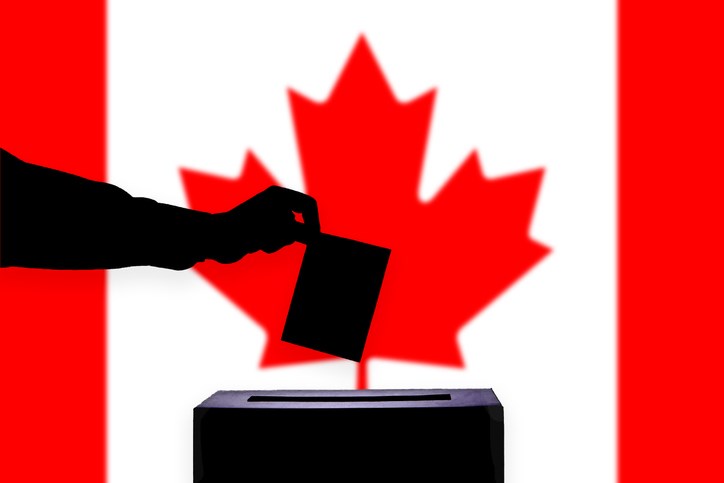The televised debates did not allow any party leader to significantly improve their approval ratings , but there are other considerations that are currently making the prospect of a Liberal minority government more likely.
To understand what is going on, we need to look into recent history. Two of the last four Canadian federal elections ended in majority mandates. In 2011, New Democratic Party (NDP) leader Jack Layton emerged as the main challenger to Stephen Harper, but never came close to matching his numbers when Canadians pondered who they preferred as head of government. In 2015, many voters called for a change in Ottawa that was delivered profoundly and nationally by Justin Trudeau.
On the other hand, two of the last four federal elections led to minority governments. In 2008 and 2019, the approval ratings for Canada’s then-prime ministers were similar, hovering from 35% to 45%, but with little opportunity for their key challengers –Stéphane Dion and Andrew Scheer respectively – to connect meaningfully with the electorate. The trajectory of the current campaign so far appears to be similar.
While there was a moment to be mad at the government on account of foreign policy (the Taliban’s resurgence in Afghanistan), there has not been a similar opportunity to create enough momentum for the opposition on the issues that are the primary concern of Canadians: health care (23%), the economy and jobs (22%), and housing, homelessness and poverty (16%).
The Liberal Party has not particularly wowed the public over the past fortnight. A one-point gain to reach 34% among decided voters might seem statistically irrelevant, but it is accompanied by nationwide drops for the Conservatives (from 32% to 30%) and the New Democrats (from 22 to 20%). While Trudeau’s approval rating remains lower than it was a few months ago (43%), he is still leading on one crucial indicator: the preferred prime minister question (33%, with Conservative Party leader Erin O’Toole at 26%).
Canadians may have started to look at O’Toole as “prime ministerial,” , but there is some stagnation now. The Tories also need to address a gender gap. Sunday’s announcement of a specific policy to assist couples who go through a miscarriage – when Research Co. and Glacier Media asked Canadians in April – is not accidental. Only 25% of female decided voters in Canada are choosing the Conservatives, compared to 36% among male decided voters. These numbers will not deliver a victory.
The federal New Democrats are facing a usual challenge: the prospect of ballots cast strategically if people fear a centre-right government. NDP leader Jagmeet Singh has demonstrated plenty of likeability across Canada. He has the best momentum score (27% of Canadians report an improved opinion) and the highest approval rating (49%) among the leaders whose parties run candidates across the country. Still, British Columbia remains locked in a three-party race and the NDP is a distant third in Ontario with 19%. There may still be some growth for Singh, as there was for Layton, who secured 19 seats in 2004 and then 29 in 2006.
A regional party that has plenty on the line is the Bloc Québécois. Support within the province has jumped from 24% in late August to 29% now, but is still second to the Liberals at 37%. A 7% showing nationally may seem decent for the Bloc, but it is far lower than the party’s share in elections fought with Gilles Duceppe as leader. The data shows that the younger a voter in Quebec is, the less likely he or she is to seriously consider the Bloc.
The two remaining national parties enter this week in different moods. The environment remains in double digits as an issue nationally (12%) and reaches 20% in Quebec. Still, the federal Green Party is currently supported by just 3% of decided voters in Canada. If these results are reflected on Election Day, the Greens would post their lowest national total in this century.
The People’s Party has reached 5%, aided by strong showings in Saskatchewan and Manitoba (9%), Alberta (7%) and Ontario (6%). These voters are more likely to cite accountability and leadership as the most important issue facing the country. What started as an indubitable protest against the establishment is now attracting one out of every 20 Canadian decided voters.
A week is plenty of time for parties to coalesce around the specific matters they need to address. It is important to note that 12% of Canadians who plan to cast a ballot have not chosen a party to support yet – a proportion that rises to 16% among women and 18% among those aged 18 to 34.
Since 2007, I have had the privilege of forecasting close to 100 electoral processes across North America. The shifts on the final weekend can obliterate any semblance of conventional wisdom. Two glaring examples are Ontario in 2011 (when the provincial Liberals gained four points on the final 48 hours of polling) and Alberta in 2015 (where the oblivious did not expect a victory for the New Democrats). In a campaign that has already been unique, there may still be some surprises left.
Results are based on an online study conducted from September 11 to September 13, 2021, among 1,000 adults in Canada. The data has been statistically weighted according to Canadian census figures for age, gender and region in Canada. The margin of error, which measures sample variability, is plus or minus 3.1 percentage points, 19 times out of 20.



